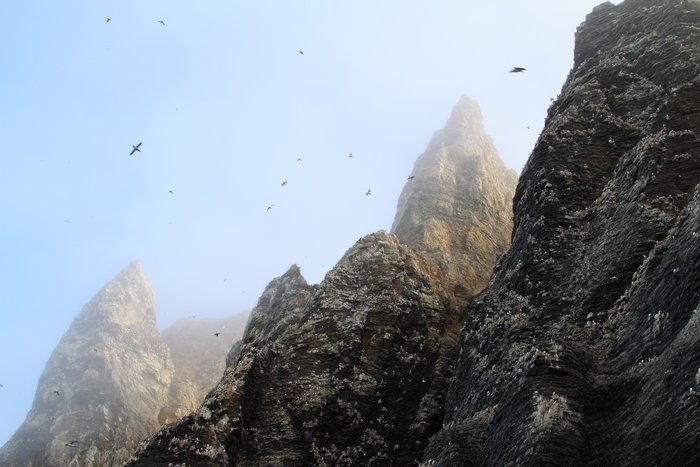The Chukchi Sea at Toddler Speed
Last modified: 12th August 2019

Read about it in Small Feet, Big Land: Adventure, Home, and Family on the Edge of Alaska - October 2013
We were out for a month, trekking a week at a time between villages. We walked and paddled around 300 miles, toddler and unborn child in tow. We shared mountaintops with musk ox, skirted carrion-eating bears, and weathered storms that sent toddler rainpants sailing into the Chukchi Sea. We shared muktuk and berries with new friends, in villages falling into the sea.

When people ask how the trip went, I smile and say “great,” like we just returned from a Hawaiian beach vacation. But it was more than great. These are the journeys that build our lives, and our understanding of the world.
Watching him charge across the beach with a pint-sized walking stick, or laughing with excitement over a flock of seagulls - I love my son more. Watching him crawl out in the storm to re-stake our flapping tent, or sharing my awe at the screeching bird rookeries - I love my husband more. I begin each expedition feeling stressed about all the logistics that go into starting off, wondering if it’s worth it. I end each expedition joyfully planning the next one.
This was our first time in the Northwest Arctic. Walking across the wilderness, the immediate layer we see is the present moment. We see one beach only in a rainstorm - the next beach only in the sun. But the more we learn, the more we can pick out the shadows of the past, and the premonitions of the future.
Bones crumbled out of ancient middens, and we stumbled across the stone rings of ancient graves. People live in the same places, hunting the same animals they have for thousands of years. But the arctic is changing. We met with elders who were born as reindeer herders, living through the transition from sod huts to flat screen TVs, and from dog sleds to snowmachines.
Oil fuels the 4-wheelers, the lights, the plane that dropped us off… Oil and gas has been discovered off these shores, and coal in the hills behind them. And while the country debates whether to develop oil in the Chukchi, the coal and oil we’re already burning helps melt the arctic, stressing the species that live here, and sending villages into the ocean. There may be little a polar bear or walrus can do to adapt. But people can change.
What is the future of the arctic?

blog.
1. Wind Over Headlands - Cape Lisburne to Point Hope, August 11-20, 2010
2. Beaches to Kivalina - Point Hope to Kivalina, August 21-29, 2010
3. Red-gold Hills and Red Dog Mine - Kivalina to Noatak, August 30-September 8, 2010
4. Down the River, Back to Home - Noatak to
Created: Jan. 19, 2018
